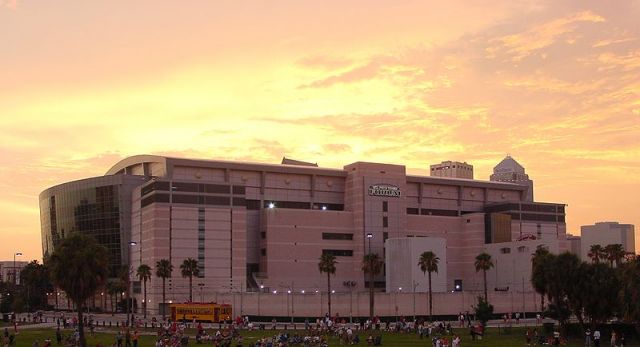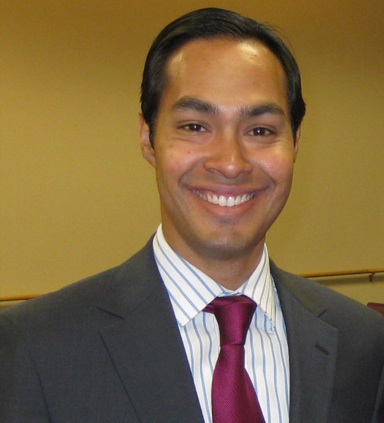
Summer is on its way out. The class of 2016 is shipping out, all the good summer movies seem a distant memory, and the NFL is only in preseason. At this point, you might even be gearing up to live-tweet and intensely hate-watch media coverage of the 2012 Republican and Democratic national conventions.
While you’re waiting, here’s a rundown of some numbers to know for the nominating conventions in Tampa and Charlotte:
50,000: The number of people (media, delegates, attendees, merchants, etc.) expected to take part in the Republican National Convention in Tampa, Florida, between August 27 and 30. (Around thirty-two percent of attendees will be journalists; 4.6 percent will be actual delegates.)
35,000: The number of people expected to take part in the Democratic National Convention in Charlotte, North Carolina, between September 4 and 6. (Forty-three percent journalists, 16 percent delegates.)
670,000: The number of square feet that make up the Tampa Bay Times Forum, the convention site where Mitt Romney will be delivering his acceptance speech.
 The Tampa Bay Times Forum Christopher Hollis/Wdwic Pictures/Wikimedia Commons1,600,000: The number of square feet that make up Bank of America Stadium (a.k.a., “Panthers Stadium,” on the night the president is speaking), where Barack Obama will be delivering his acceptance speech.
The Tampa Bay Times Forum Christopher Hollis/Wdwic Pictures/Wikimedia Commons1,600,000: The number of square feet that make up Bank of America Stadium (a.k.a., “Panthers Stadium,” on the night the president is speaking), where Barack Obama will be delivering his acceptance speech.
 Bank of America Stadium UCinternational/Wikimedia Commons
Bank of America Stadium UCinternational/Wikimedia Commons
346,037: The population of Tampa.
751,087: The population of Charlotte.
$2,000,000: The amount spent by the Tampa Police Department on 60 new surveillance cameras, all of which are installed downtown.
$765,795: The amount spent by the Charlotte-Mecklenburg Police Department on security software and a “command center upgrade.”
15,000: The number of protesters expected to show up at the Tampa convention site.
10,000: The number of protesters expected to show up at the Charlotte convention site.
$136,000,000: The total amount of cash the two parties have received in public funding for convention security and other expenses.
 $175,000,000: Amount of money projected to flow into the local Tampa economy as a result of the four-day-long Republican convention.
$175,000,000: Amount of money projected to flow into the local Tampa economy as a result of the four-day-long Republican convention.
$150,000,000: Amount of money projected flow into the local Charlotte economy as a result of the three-day-long Democratic convention.
$55,000,000: The fundraising dollars the Republican host committee expects to haul in during the four days in Tampa.
$36,600,000: The fundraising dollars the Democratic host committee hopes to achieve in the three days in Charlotte. (They likely won’t.)
$0: The convention funds Democrats have raised from corporate donors. (This isn’t a #fail, per se; it’s intentional.)
33: The percentage of registered voters who identify as Republicans in Hillsborough County, where the city of Tampa is located.
45.2: The percentage of registered voters who identify as Democrats in Mecklenburg County, where the city of Charlotte is located.
49: The age of the Republican keynote speaker, New Jersey Gov. Chris Christie, at the time of the 2012 convention.
 David Shankbone/Wikimedia Commons37: The age of the Democratic keynote speaker, San Antonio mayor Julián Castro, at the time of the 2012 convention.
David Shankbone/Wikimedia Commons37: The age of the Democratic keynote speaker, San Antonio mayor Julián Castro, at the time of the 2012 convention.
 Jamesgatz/Wikimedia Commons20: The number of strip clubs in Tampa.
Jamesgatz/Wikimedia Commons20: The number of strip clubs in Tampa.
12: The number of strip clubs in Charlotte.
A CAGILLION BAGILLION: The estimated number of highly predictable stories published by various news outlets over the past three months on what the Republican and Democratic national conventions mean for their respective host town’s stripper revenue.
 The Consumerist/Flickr
The Consumerist/Flickr












